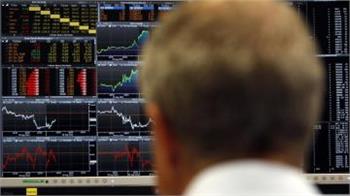 |
Crisis of confidence grips markets
 |
Globe and Mail- North American markets dropped sharply in the first full day of trading following the credit rating downgrade of the United States, as investors looked for safer bets at a time of extreme financial uncertainty.
The Dow Jones industrial average, The S&P 500 and the S&P/TSX Composite Index all dropped more than 2 per cent in early morning trading Monday, mirroring similar declines across Asia and Europe.
The significant declines, which follow what was already the most brutal week for global stock prices since the depths of the 2008 recession, indicate severe investor concern about the potential for a so-called “double-dip” recession. That concern was punctuated on Friday when credit rating agency S&P announced a downgrade of the U.S. rating from Triple-A to AA-plus – the first time in modern history the U.S. has experienced such a downgrade.
The S&P decision unleashed an angry war of words between the agency and the White House, forcing both sides to take to the airwaves to defend their positions. Nonetheless, the reaction from investors seems to indicate the broader concern is with the global economic situation, rather than what is at least partially a symbolic ratings downgrade.
In an attempt to counter criticism, S&P held a teleconference Monday to further explain its decision. The agency sought to frame the downgrade as primarily related to what it sees as a polarized political environment and how it affects Washington's ability to make fiscal decisions. David Beers, S&P’s global head of sovereign ratings, specifically mentioned “the extraordinary difficulty people are having in finding common ground,” when it comes to U.S. fiscal policy. Indeed, S&P’s negative outlook over the next six to 24 months means the firm is not optimistic that the congressional committee charged with suggesting budget cuts will ultimately improve Washington’s situation.
According to S&P, in previous cases where a nation has lost its triple-A rating, the shortest time it took to regain that rating was nine years, and the longest was 18 years (although the firm cautioned that each case is unique).
However in terms of risk, the rating change is fairly symbolic. S&P has never seen an AA-plus nation default on its debt. As John Chambers, chairman of Standard & Poor’s sovereign debt committee, put it: “It’s like going from indigo to navy blue.”
In fact, on a day when most global equity markets saw steep declines, U.S. treasuries actually rose – a sign that investors are keen on safe bets during a time of uncertainty.
“Despite losing its mint rating, the U.S. is extremely unlikely to default, given its enormous wealth and potential to raise tax revenue,” said Sherry Cooper of BMO Capital Markets. “The deep, liquid Treasury pool will still be the one investors dive into when the financial climate gets sticky.”
Around the globe, equity markets took a beating. Asian markets, including those in China, Australia, Hong Kong and Japan, all ended Monday trading down. Tokyo’s Nikkei average dropped more than 2 per cent on the day, while the Shanghai Composite dropped almost 4 per cent.
European markets were mixed in early Monday trading. After a brief morning rally, fears of a so-called “double-dip” recession sent the FTSE 100 had fallen almost 2 per cent by noon (7 a.m. EST) in London.
Markets had been up more than 2 per cent both in Milan and Madrid, after the European Central Bank promised to help support Italy and Spain’s uncertain debt situation through a bond-buying program. Bloomberg reported early Monday that the ECB had begun buying Italian and Spanish government bonds, citing people familiar with the transactions.
434 page views
|
|
|
|